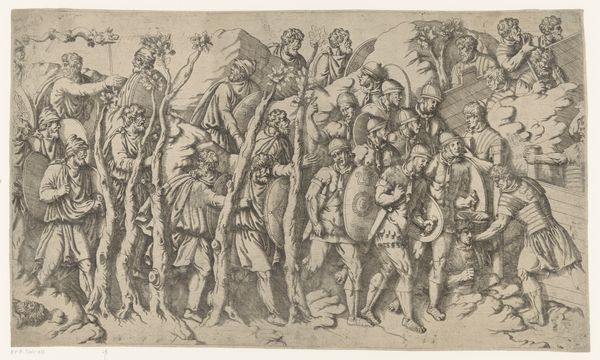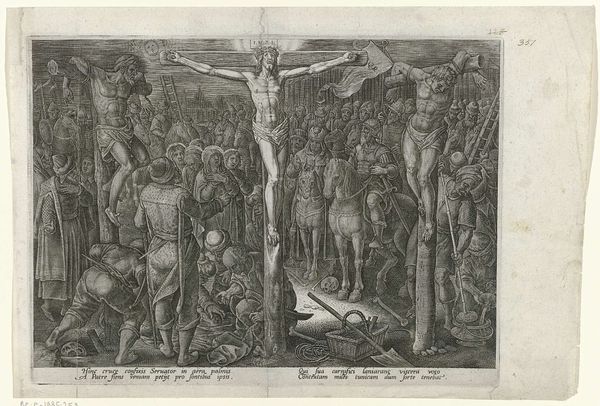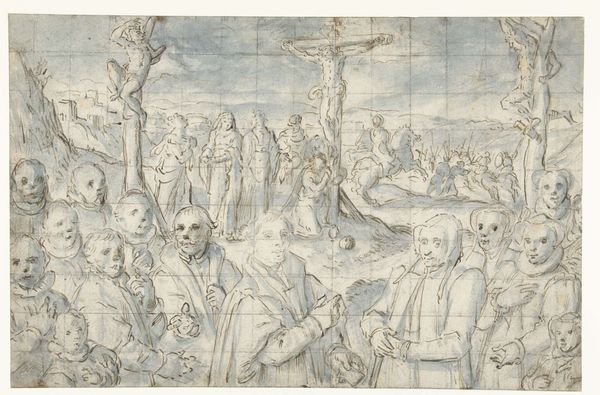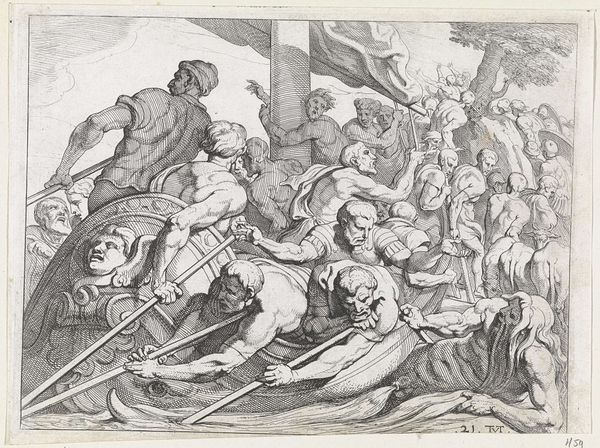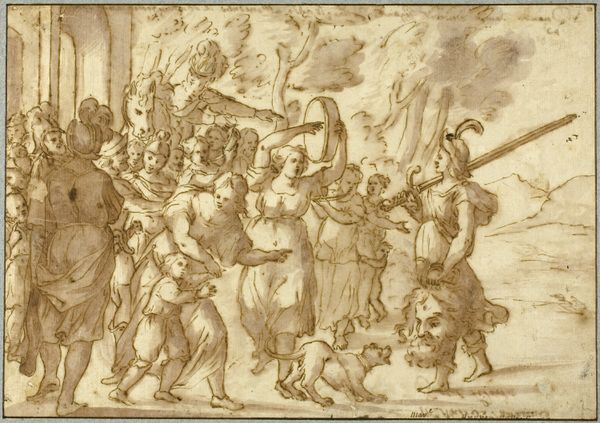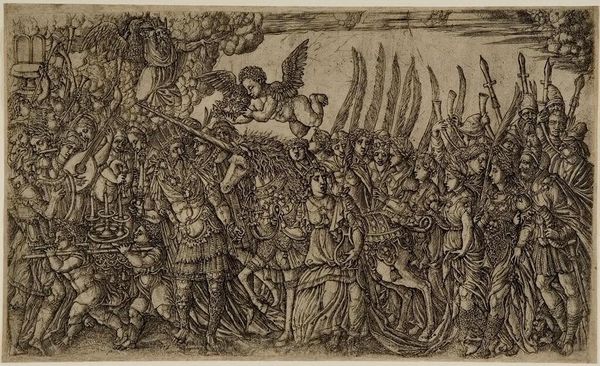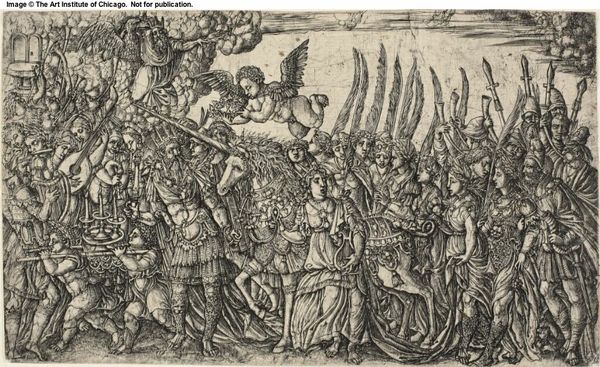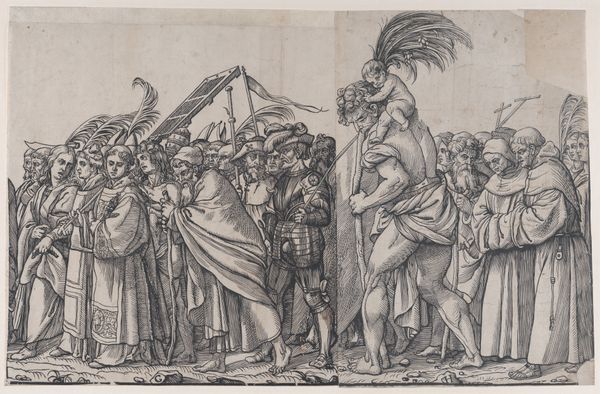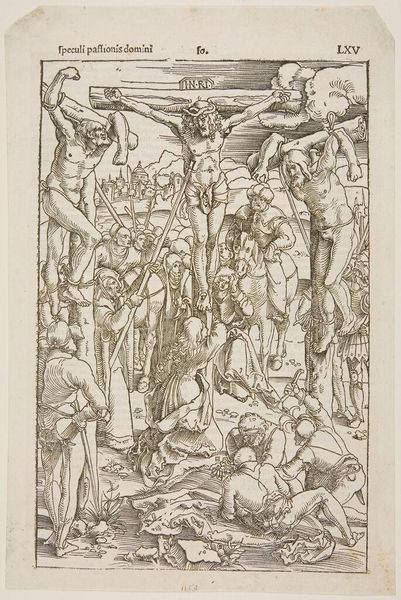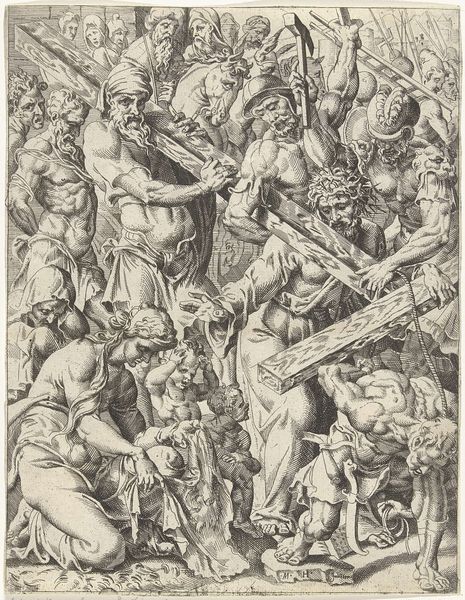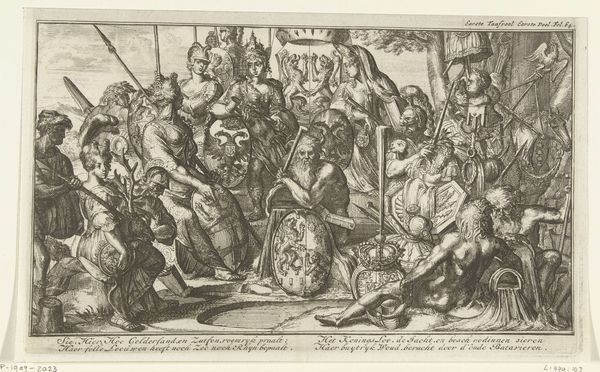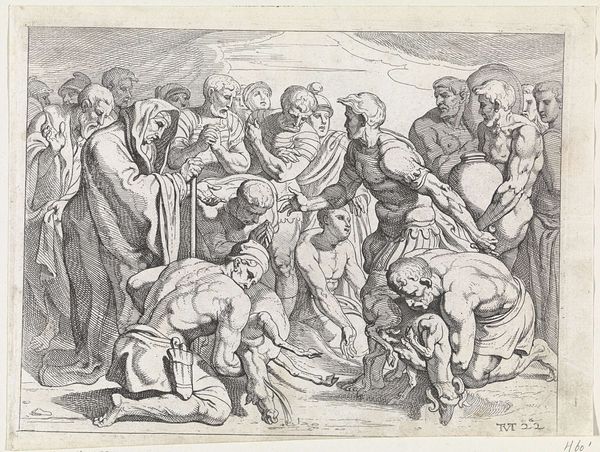
drawing, ink, pen
#
portrait
#
drawing
#
pen drawing
#
dutch-golden-age
#
pen sketch
#
figuration
#
ink
#
ink drawing experimentation
#
group-portraits
#
pen
#
history-painting
Dimensions: height 294 mm, width 392 mm
Copyright: Rijks Museum: Open Domain
Curator: Let's discuss Cornelis Ketel’s pen and ink drawing, "Schutterij bestaande uit achtendertig man," thought to have been executed between 1588 and 1616. What’s your first impression? Editor: Chaotic, yet carefully composed. There are so many figures, yet the artist keeps my eye circulating around the drawing, always finding something new. It’s fascinating. Curator: Indeed. Consider that civic guard portraits such as this are fascinating documents reflecting social hierarchies and political power structures in the Dutch Golden Age. These militia groups were often formed based on neighborhood or trade affiliation and provided civic defense, law, and order, but the images also reflect growing civic engagement. How do these individuals communicate power visually through dress and arms? Editor: Well, if we examine the repeated symbols, like the swords, pikes, and shields, the message becomes clearer. Weapons and armor were a mark of honor and status and participation in such civic duties. Even their clothing – notice the ruffs, hats, and fabrics. They're unified but still manage to reflect individual wealth and rank. It also feels important to point out the tension of who gets seen, and how each of the men angle to appear like a prominent figure of social life and structure. Curator: Right, it shows a distinct connection between self-representation, power, and belonging during this transformative era. Moreover, the drawing showcases Ketel's skillful use of line work and detail. Even in a monochrome sketch, he manages to convey textures and individual likenesses effectively. I'm especially drawn to how individual it feels even as a representation of communal identity. Editor: To me, the expressiveness captured through minimal shading and hatching amplifies each man's presence. The varying expressions— some proud, some stoic— speak volumes. The drawing also suggests the rising middle class and their collective investment in defending their newfound liberties and privileges, no? Curator: Absolutely. Works such as this capture the intersectional issues of power, status, identity, and emerging forms of political involvement during a crucial period of transformation. Editor: Examining repeated and evolving symbolic language and imagery within historical artworks lets us examine what details remain potent cultural connectors today.
Comments
No comments
Be the first to comment and join the conversation on the ultimate creative platform.
